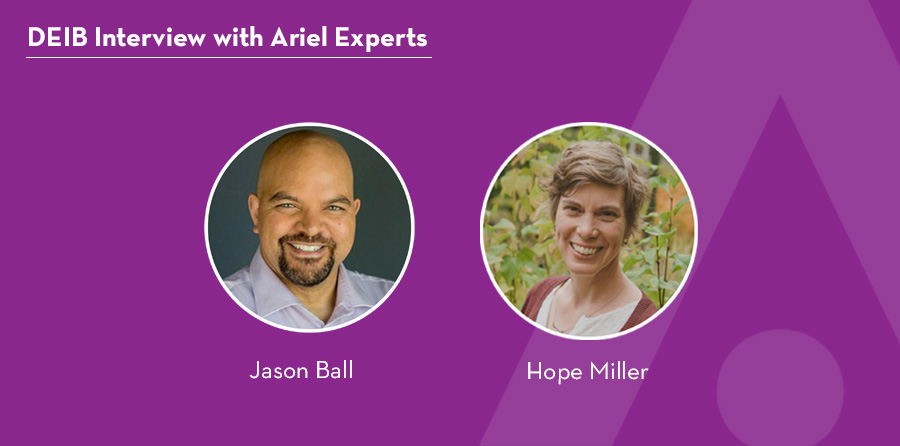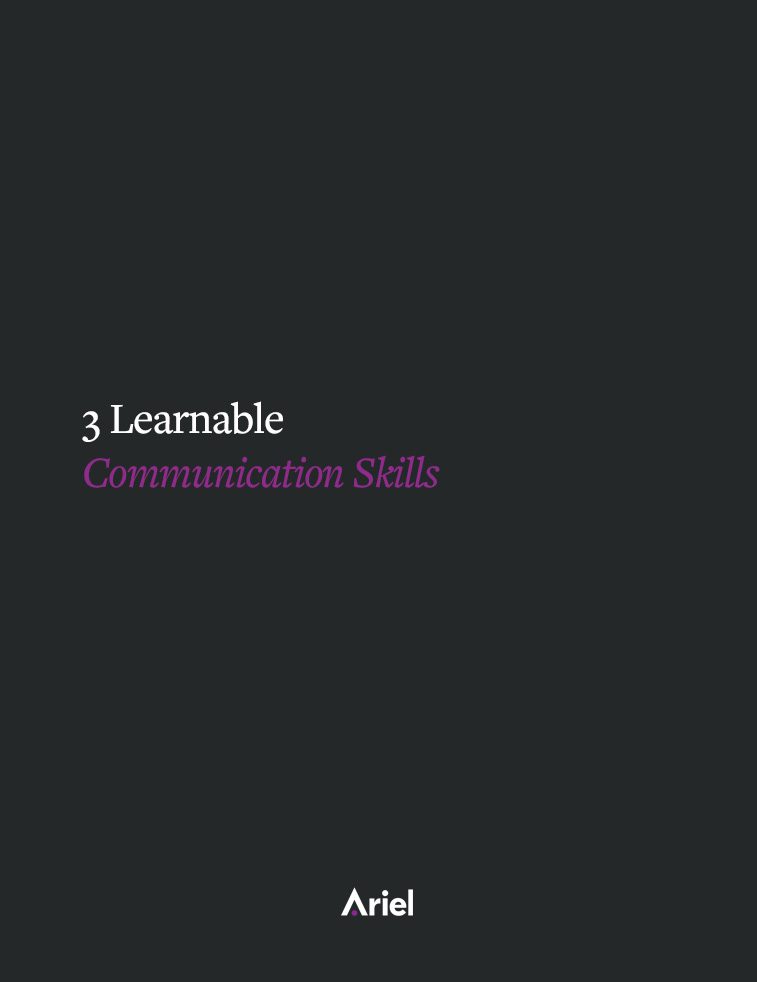Driving Inclusion from the Frontlines: Ariel Facilitators Share Their Expertise on Diversity, Equity, Inclusion and Belonging

Diversity, equity, inclusion, and belonging (DEIB) are crucial aspects of any successful workplace. Companies that embrace diversity and foster a culture of inclusion tend to be more innovative, productive, and profitable. But achieving DEIB isn’t always easy, and it requires intentional effort and commitment from leaders and employees alike.
To learn more about how to promote DEIB in the workplace, we interviewed two of our facilitators, Jason Ball and Hope Miller who have extensive experience in diversity and inclusion.
Q: How would you define the concept of diversity and its importance in the workplace?
Jason Ball- Diversity refers to the differences present in any group, not just what’s different from what is seen as “the norm”. In an organization it’s reflected in the dimensions of identity of the people working together. We must acknowledge these dimensions so we’re aware of not only what dimensions we’re missing to achieve better representation of ideas, but also recognize areas where we might be too much alike, which can activate several unconscious biases including groupthink and affinity bias.
Hope Miller- Diversity is the presence of difference–difference in race, ethnicity, religion, sexuality, gender expression, geography, language, socio-economic class, etc. The value of diversity–in the workplace and everywhere else–is the explosion of ideas and perspectives that comes from this broad range of lived experiences. Connecting with folks who are different from us–in any way–deepens our empathy and facilitates better collaboration, innovation, and problem solving.
Q: What are some strategies you have used to promote diversity and inclusion in the workplace and with your coachees?
Jason Ball- It starts with taking a hard look in the mirror and not moving forward until you have solid answers to questions like “Why do we want to be more diverse?”, “What does equity mean for our org?” and “How are we inclusive, according to the people we are trying to reach”, not “How do we think we’re being inclusive?”. Next ask “What do we need to stop doing that gets in the way of being equitable and more welcoming for the audience we want to attract?”. The first thing to do is to make sure you have an environment that practices inclusion for the diversity that already exists in your world. Once you have learned to practice inclusion those skills can then be applied to many types of identities and situations; but if you have not learned how to support the people you already have then your systems will not allow for any changes. It is like grafting fresh branches onto a dying tree – the rotten roots will not support the new growth…
Hope Miller- Relationship-building, hands down. Get to know people, especially people who seem “different” to you. Find common ground and enjoy building connections with people. Relationships are how we get things done.
That said, we all come to relationships with a set of ingrained biases and preconceived, so we need to watch out for how those biases impact our behavior. My litmus test for this is, “differential evaluation of equivalent behavior.” Would you evaluate this same behavior differently if someone else were doing it? (The “classic” example is a woman leader behaving in a confident, assertive manner, but she is seen as cold, domineering, or–worse–“ambitious”; whereas a man behaving the same way is seen as a confident, capable leader.)
Q: In your opinion, what is the most pressing diversity issue facing workplaces today, and how would you address it as a coach whose focus is on DEIB?
Jason Ball- The main problem is that people focus on diversity and not inclusion. Decades of emphasis on diversity in recruiting without any accompanying operational changes led to a revolving door in many organizations. More emphasis needs to be placed on creating environments where differences are not seen as a cost but rather as a resource.
Hope Miller- This is a tough one and definitely a growing edge for me a coach and facilitator. I think it’s important to let people voice their feelings. Allowing a “critic” to express their discomfort or disagreement with a training can help to create buy-in for that person. The tricky part is ensuring that their disagreement doesn’t harm someone else’s personhood or humanity. As a facilitator and coach, my #1 job is to create and maintain psychological safety for everyone. If a “critic’s” complaints start to target a certain group of people and disrupt the psychological safety, I need to step in and redirect the conversation. One tool I often use for “critics” who feel like they treat everyone the same, regardless of who they are, is the Implicit Association Test. So, I’ll direct my critic to the IAT website and tell them to take a brief test. Invariably, the IAT tells them that, no, in fact, they do NOT treat everyone the same, and, thus, they could benefit from a DEIB training.
